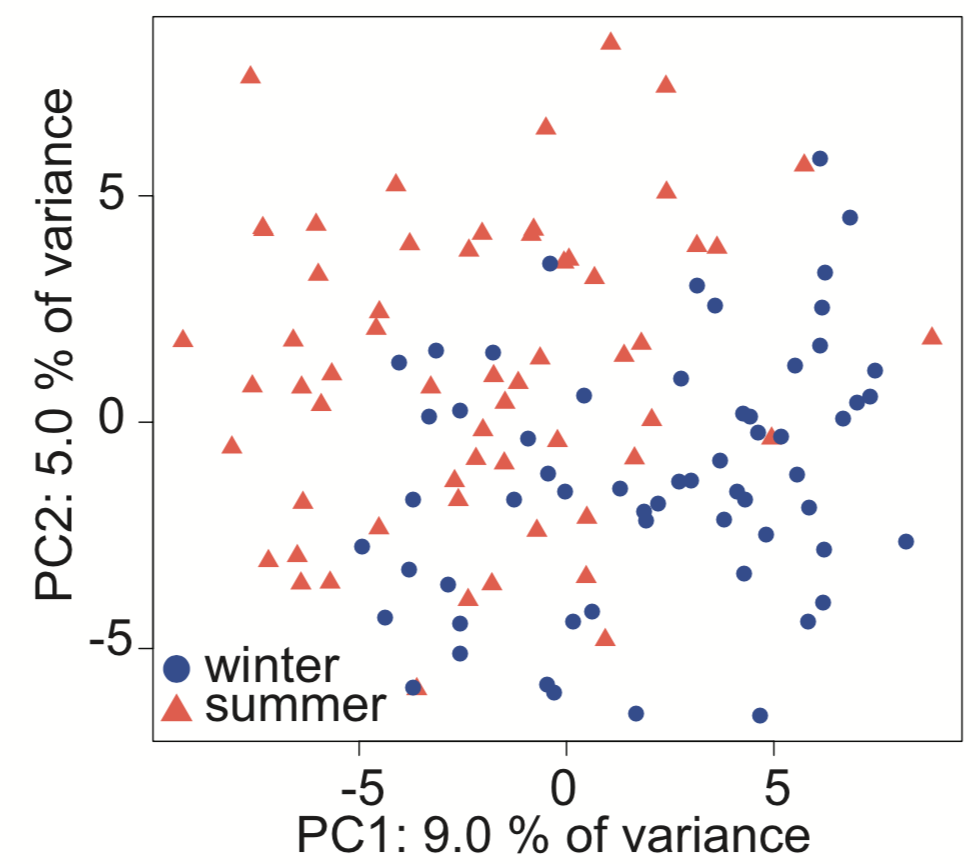Environmental influences on the microbiome

Seasonal variation in gut microbiome composition

Many studies have shown the important role diet plays in determining gut microbiome composition, however, many of us eat fairly consistant diets seasonally because we have access to fresh produce grown all over the globe.
To examine whether seasonal differences in diet might affect the microbiome, I examined the fecal bacterial content in an isolated, communally-living population: the Hutterites.
Women in Hutterite colonies (a small town of a few hundred Hutterites) cook 3 huge, communal meals a day and the entire colony eats buffet style from that meal (see some photos).
Because of this, inter-individual dietary variation in the Hutterites is much less than typical Americans at any given time.
However, most of their produce is grown on the colony during the summer months and then canned, frozen, or pickled for the winter and spring.
This means that they each many more serving of fresh produce during the summer than the winter.
To examine whether or not these seasonal dietary differences affect the microbiome, we examined fecal microbiome sequencing using high-throughput 16S rRNA gene sequencing.
We observe wide-spread, consistent shifts in the microbiome, many of which are likely driven by diet (as well as many other factors that change between season such as activity levels, vitamin D exposure, pathogen levels, immune activity, etc).
Publication:
Seasonal variation in human gut microbiome composition.
Davenport ER, Mizrahi-Man O, Michelini K, Barreiro LB, Ober C, and Gilad Y. PloS One. 2014;9(3):e90731
